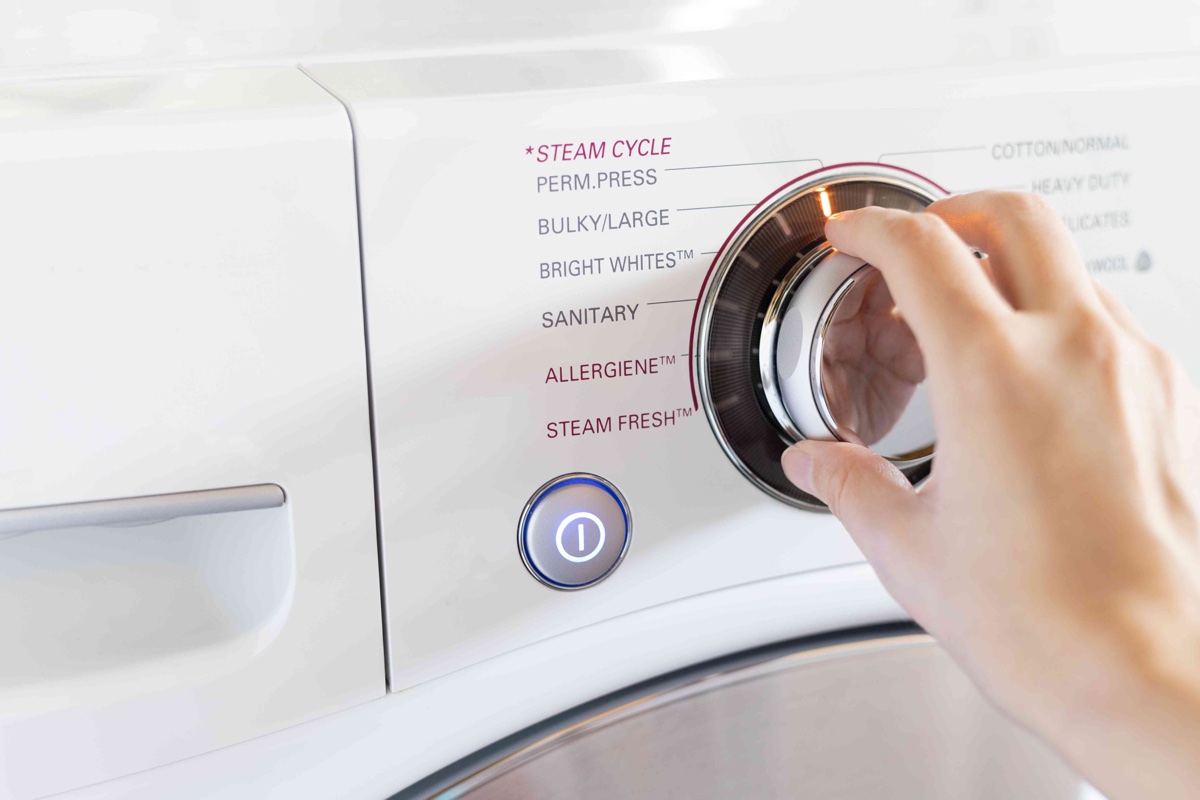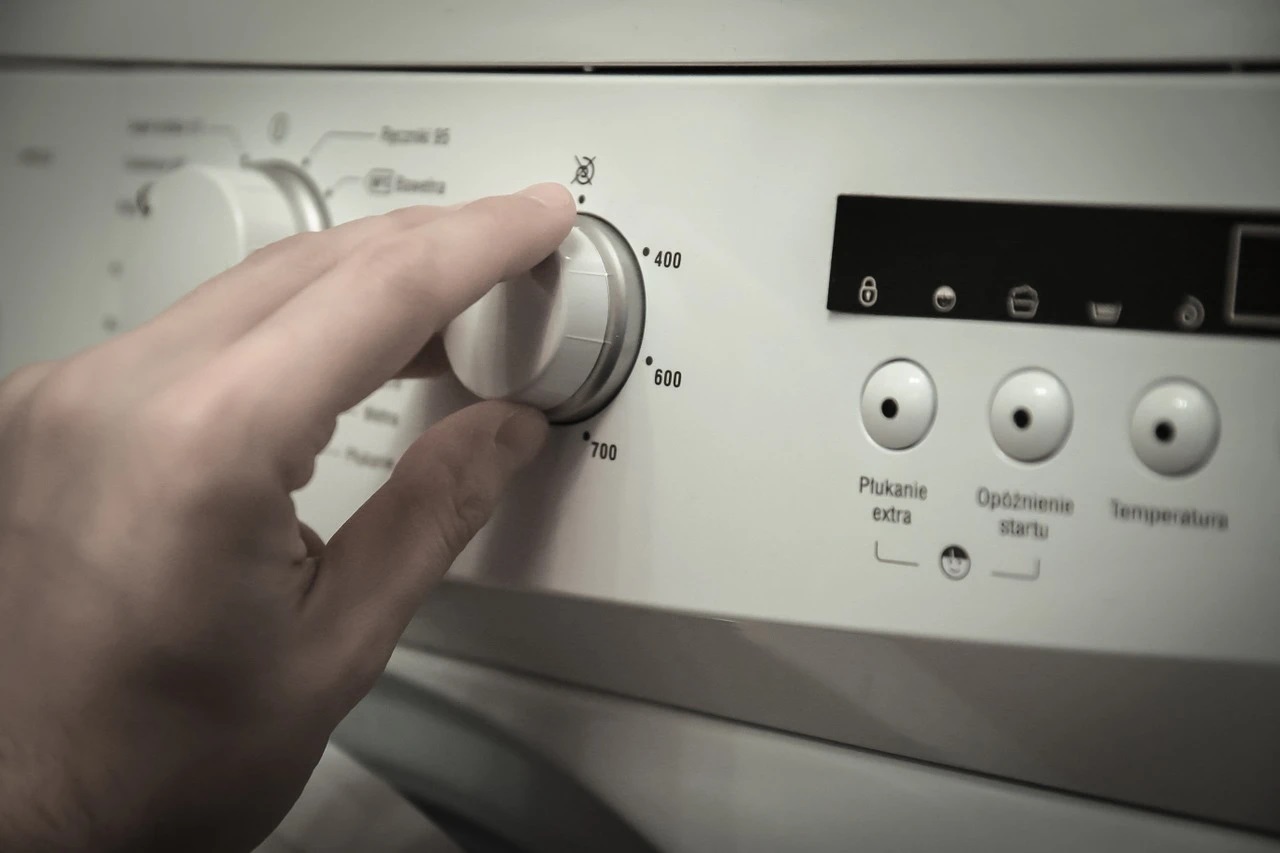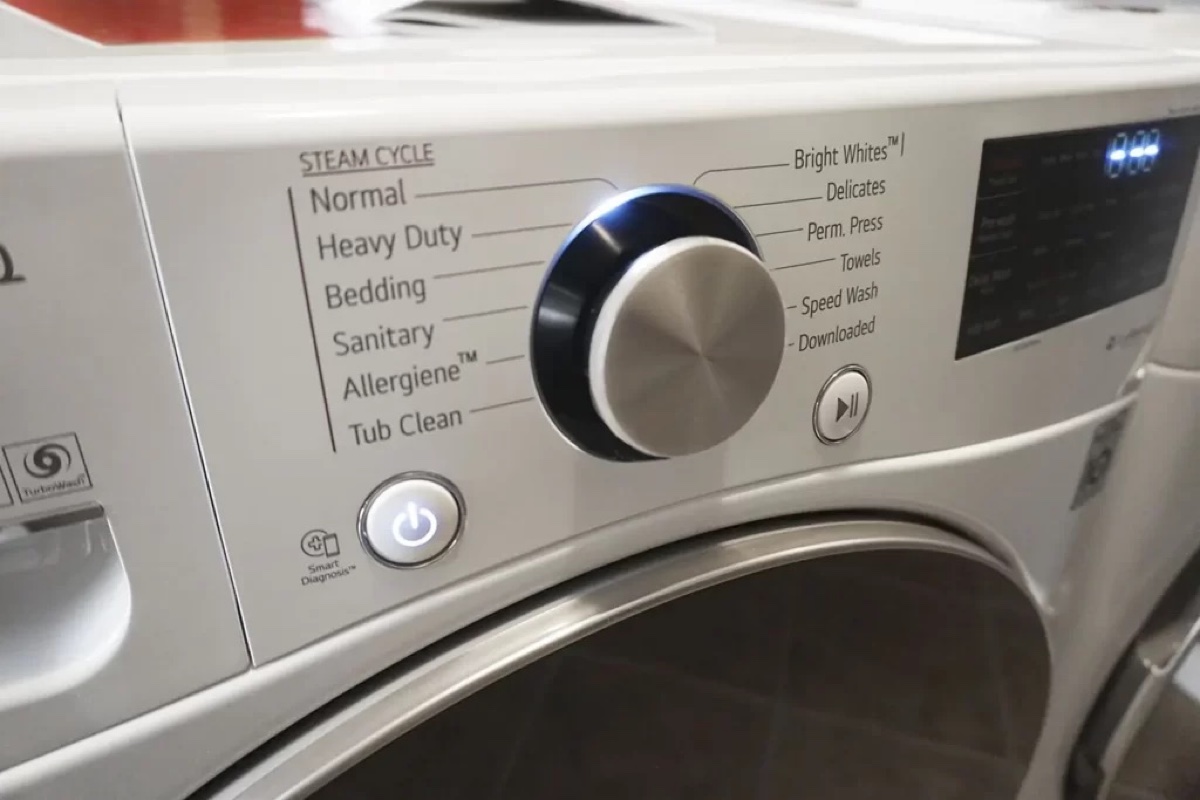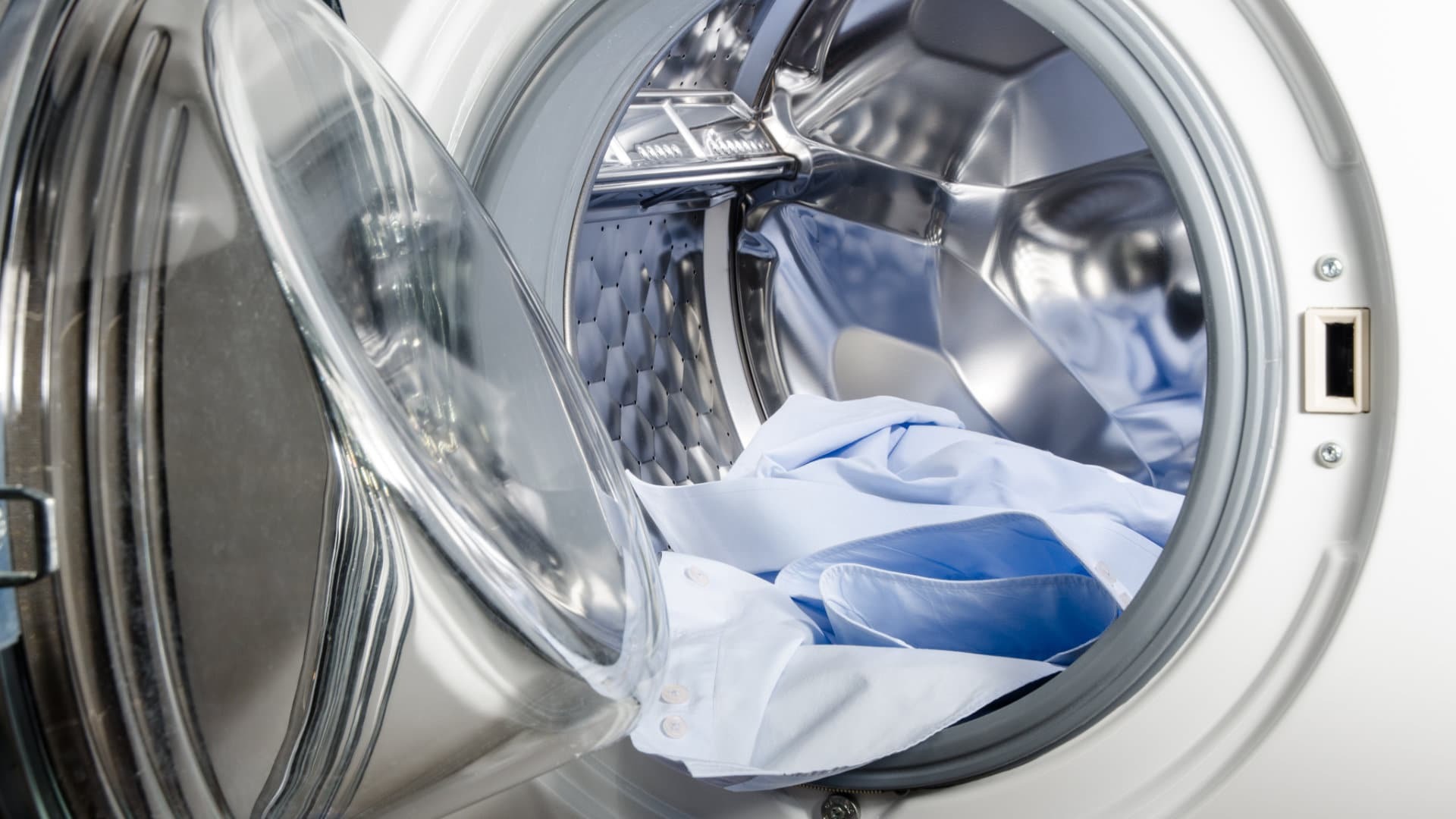Home>Home Appliances>Laundry Appliances>When Is The Rinse Cycle In A Washing Machine


Laundry Appliances
When Is The Rinse Cycle In A Washing Machine
Published: February 22, 2024
Learn when the rinse cycle occurs in a washing machine and how it impacts your laundry routine. Discover tips for optimizing your laundry appliances.
(Many of the links in this article redirect to a specific reviewed product. Your purchase of these products through affiliate links helps to generate commission for Storables.com, at no extra cost. Learn more)
Understanding the Rinse Cycle
The rinse cycle is a crucial stage in the laundry process, playing a pivotal role in ensuring that your clothes emerge clean, fresh, and free from detergent residue. This cycle follows the main wash and serves to remove any remaining detergent, dirt, and grime from the fabric. Understanding the significance of the rinse cycle can help you appreciate its role in achieving optimal cleaning results for your laundry.
During the rinse cycle, the washing machine fills with clean water, which is then agitated to thoroughly rinse away the detergent and loosened soil from the garments. This process is essential for preventing soap residue from accumulating on the fabric, which can lead to skin irritation and fabric deterioration over time. By effectively rinsing the clothes, the rinse cycle helps maintain the integrity of the fabric and ensures that your garments feel soft and comfortable against your skin.
Furthermore, the rinse cycle contributes to the overall efficiency of the washing process by preparing the fabric for the subsequent steps, such as spinning and drying. By removing residual detergent and dirt, the rinse cycle sets the stage for the final stages of the laundry process, allowing the fabric to emerge from the washing machine in a state that is primed for optimal drying and ironing.
Understanding the rinse cycle also involves recognizing its role in water conservation. Modern washing machines are designed to optimize water usage, and the rinse cycle is no exception. By efficiently rinsing the clothes with the appropriate amount of water, the rinse cycle minimizes water wastage while still ensuring thorough cleaning results.
In essence, the rinse cycle is a critical component of the laundry process, contributing to the cleanliness, comfort, and longevity of your garments. By comprehending the purpose and benefits of the rinse cycle, you can make informed decisions about your laundry routine and maximize the effectiveness of your washing machine.
Key Takeaways:
- The rinse cycle in a washing machine is crucial for removing detergent residue and preparing clothes for drying, contributing to cleanliness, comfort, and water conservation.
- To optimize the rinse cycle, use the right amount of detergent, pre-treat stains, and consider fabric softeners, ensuring thorough cleansing and well-maintained garments.
Importance of the Rinse Cycle
The rinse cycle holds a pivotal role in the laundry process, serving as a vital step in ensuring that clothes are thoroughly cleansed and free from detergent residue. This stage, following the main wash, is designed to remove any remaining detergent, dirt, and grime from the fabric, thereby contributing to the overall cleanliness and freshness of the laundry.
One of the primary reasons why the rinse cycle is of utmost importance is its ability to eliminate residual detergent from the garments. During the main wash, the detergent works to lift and suspend dirt and grime from the fabric. However, without a thorough rinse, the detergent residue can linger on the clothes, potentially leading to skin irritation and fabric deterioration. By effectively rinsing the garments, the rinse cycle ensures that the fabric is free from any leftover detergent, allowing it to maintain its softness and comfort against the skin.
Moreover, the rinse cycle plays a crucial role in preparing the fabric for subsequent stages of the laundry process, such as spinning and drying. By removing residual detergent and dirt, the rinse cycle sets the foundation for optimal drying and ironing, ensuring that the garments emerge from the washing machine in a state that is primed for the next steps.
In addition to its impact on garment cleanliness and comfort, the rinse cycle also contributes to water conservation. Modern washing machines are designed to optimize water usage, and the rinse cycle is no exception. By efficiently rinsing the clothes with the appropriate amount of water, the rinse cycle minimizes water wastage while still ensuring thorough cleaning results, aligning with sustainable and eco-friendly laundry practices.
Furthermore, the rinse cycle is essential for maintaining the integrity of the fabric. By thoroughly rinsing away any remaining dirt and grime, the cycle helps to preserve the quality and longevity of the garments, ensuring that they remain in optimal condition for an extended period.
In essence, the importance of the rinse cycle cannot be overstated. From ensuring the removal of detergent residue to preparing the fabric for subsequent steps and contributing to water conservation, this stage is integral to achieving clean, fresh, and well-maintained laundry. Understanding and acknowledging the significance of the rinse cycle empowers individuals to make informed decisions about their laundry routines, ultimately enhancing the effectiveness of their washing machines and the overall quality of their garments.
How the Rinse Cycle Works
The rinse cycle in a washing machine is a fundamental stage that follows the main wash and is designed to thoroughly cleanse the garments of any remaining detergent, dirt, and grime. Understanding how the rinse cycle works provides valuable insight into the intricate mechanisms that contribute to the overall cleanliness and freshness of the laundry.
When the washing machine advances to the rinse cycle, it initiates the process by filling the drum with clean water. This water is essential for effectively rinsing the garments and removing any residual detergent and loosened soil from the fabric. The amount of water used during the rinse cycle is carefully calibrated to ensure thorough cleansing while optimizing water usage, aligning with modern washing machines' focus on efficiency and sustainability.
Once the drum is filled with water, the washing machine agitates the garments, creating a gentle yet thorough movement that facilitates the rinsing process. This agitation is instrumental in dislodging any remaining detergent and dirt from the fabric, ensuring that the garments emerge from the rinse cycle free from any lingering residue.
As the garments are agitated in the water, the rinse cycle works to thoroughly flush out the detergent and dirt, leaving the fabric clean and refreshed. The duration of the rinse cycle is precisely calculated to allow for adequate rinsing without unnecessary prolongation, optimizing the overall efficiency of the laundry process.
Following the agitation phase, the washing machine proceeds to drain the water from the drum, signaling the completion of the rinse cycle. This drainage process effectively removes the soapy water, along with the suspended dirt and grime, leaving the garments ready for the subsequent stages of spinning and drying.
In essence, the rinse cycle operates through a meticulous sequence of filling the drum with clean water, agitating the garments to facilitate thorough rinsing, and draining the water to complete the process. This systematic approach ensures that the garments emerge from the washing machine cleansed of any residual detergent and dirt, setting the stage for optimal drying and ironing.
Understanding how the rinse cycle works provides valuable insight into the intricate processes that contribute to the overall effectiveness of the washing machine in achieving clean, fresh, and well-maintained laundry. By comprehending the mechanics of the rinse cycle, individuals can make informed decisions about their laundry routines, ultimately maximizing the cleanliness and longevity of their garments.
The rinse cycle in a washing machine usually occurs after the clothes have been agitated and the dirty water has been drained. During the rinse cycle, clean water is pumped into the machine to rinse away any remaining detergent and dirt from the clothes.
Tips for Optimizing the Rinse Cycle
-
Use the Right Amount of Detergent: Avoid overloading the washing machine with excessive detergent, as this can lead to difficulty in rinsing out the soap completely. Follow the manufacturer's guidelines for the appropriate detergent quantity based on the load size to ensure effective rinsing.
-
Pre-treat Stains: Prior to starting the wash cycle, pre-treat any stubborn stains on the garments. This proactive approach can help minimize the reliance on excessive detergent during the main wash, making it easier for the rinse cycle to thoroughly cleanse the fabric.
-
Select the Correct Water Temperature: Different fabrics and types of dirt require specific water temperatures for optimal rinsing. Consult the garment care labels to determine the suitable water temperature for the rinse cycle, ensuring that the fabric is effectively cleansed without compromising its integrity.
-
Avoid Overcrowding the Drum: Overloading the washing machine can hinder the effectiveness of the rinse cycle, as it may prevent the garments from being thoroughly immersed and agitated in the water. Maintain a balanced load size to allow for adequate water circulation and optimal rinsing.
-
Utilize the Extra Rinse Option: Many modern washing machines offer an extra rinse option, which can be particularly beneficial for heavily soiled loads or individuals with sensitive skin. This additional rinse cycle ensures that any remaining detergent is thoroughly removed, promoting enhanced cleanliness and comfort.
-
Regularly Clean the Washing Machine: A clean washing machine is essential for optimizing the rinse cycle. Periodically clean the detergent dispenser, door seal, and drum to prevent detergent buildup, which can impede the rinsing process and compromise the cleanliness of the garments.
-
Consider Fabric Softeners: Fabric softeners can aid in the rinsing process by conditioning the fabric and reducing detergent residue. However, it is important to use fabric softeners in moderation, as excessive use can diminish the absorbency of certain fabrics.
-
Inspect the Water Inlet Filters: Ensure that the water inlet filters of the washing machine are free from debris and mineral buildup, as clogged filters can restrict water flow during the rinse cycle, affecting its effectiveness.
By implementing these tips, individuals can optimize the rinse cycle, ensuring that their garments emerge from the washing machine thoroughly cleansed, free from detergent residue, and primed for subsequent steps such as spinning and drying.
Common Issues with the Rinse Cycle
The rinse cycle, while essential for achieving clean and fresh laundry, can sometimes be plagued by common issues that hinder its effectiveness. Understanding these issues is crucial for troubleshooting and optimizing the rinse cycle to ensure optimal cleaning results.
One prevalent issue with the rinse cycle is inadequate rinsing, leading to residual detergent on the garments. This can occur due to several factors, such as overloading the washing machine, using an excessive amount of detergent, or selecting the incorrect water temperature. In such instances, the fabric may feel stiff or appear cloudy, indicating the presence of detergent residue. Additionally, hard water with high mineral content can contribute to poor rinsing, as the minerals may interfere with the cleansing process, leaving the garments feeling less than thoroughly cleansed.
Another common issue is the presence of lint or soap scum on the laundry after the rinse cycle. This can be attributed to the accumulation of lint in the washing machine, which may not be effectively removed during the rinse cycle. Additionally, soap scum can form on the garments if the detergent is not properly dispensed or if the washing machine's water drainage system is compromised.
Furthermore, the rinse cycle may be impeded by water drainage problems, resulting in the garments not being adequately rinsed. Clogged drain hoses or filters, as well as improper installation of the drainage system, can lead to water retention in the drum, preventing thorough rinsing and potentially causing musty odors in the laundry.
In some cases, individuals may encounter issues with fabric softener not dispensing properly during the rinse cycle, leading to uneven distribution or the absence of fabric softening benefits. This can be attributed to dispenser clogs, incorrect product usage, or malfunctioning components within the washing machine.
Moreover, individuals with sensitive skin may experience skin irritation if the rinse cycle fails to effectively remove detergent residue from the garments. This can be particularly concerning for those with allergies or skin sensitivities, emphasizing the importance of thorough rinsing for overall comfort and well-being.
Addressing these common issues with the rinse cycle involves proactive maintenance, proper detergent usage, and regular inspection of the washing machine's components. By identifying and resolving these issues, individuals can optimize the rinse cycle, ensuring that their laundry emerges from the washing machine impeccably clean, free from detergent residue, and ready for subsequent care.
Frequently Asked Questions about When Is The Rinse Cycle In A Washing Machine
Was this page helpful?
At Storables.com, we guarantee accurate and reliable information. Our content, validated by Expert Board Contributors, is crafted following stringent Editorial Policies. We're committed to providing you with well-researched, expert-backed insights for all your informational needs.
















0 thoughts on “When Is The Rinse Cycle In A Washing Machine”